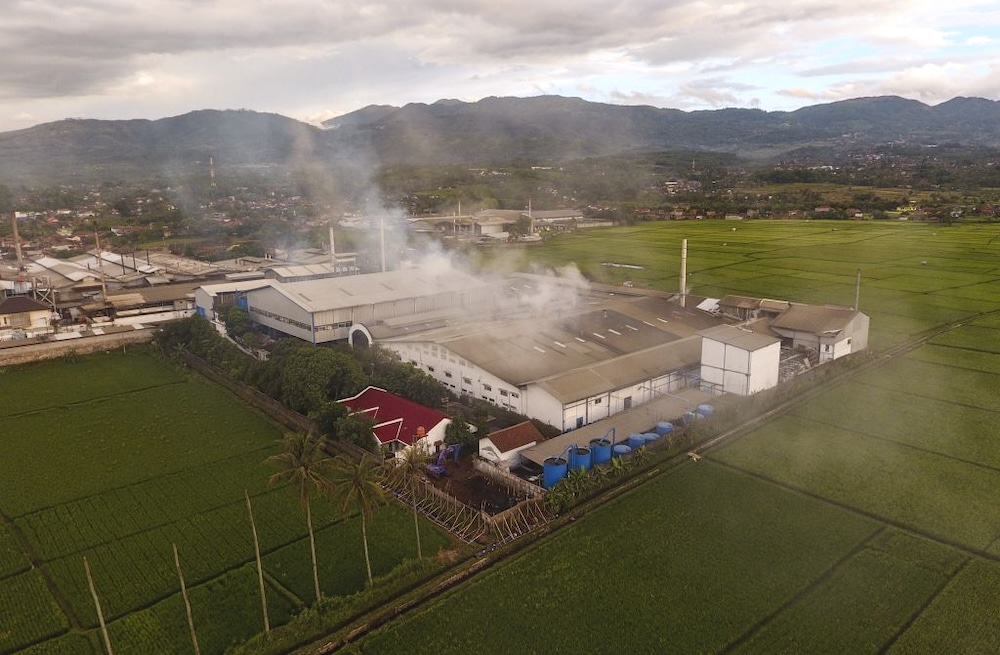
Quick Key Facts
- Slow fashion aims to make consumers reevaluate their relationship to clothes and align with consumption habits and brands that better serve the planet.
- The apparel and footwear industries contribute to an estimated 8% of the world’s greenhouse gas emissions, with fashion being the third-highest polluting industry in the world.
- To reduce textile waste and pollution, slow fashion favors slower production schedules, smaller collections of clothing lines, zero-waste designs and the use of sustainable materials.
- In the EU, textile waste totals 4 million tons a year, while in the U.S. it hit 17 million tons in 2018, with the U.S. Environmental Protection Agency (EPA) estimating that textile waste accounts for up to 5% of landfill space.
- Clothes are also responsible for 20% to 35% of all plastic pollution in the marine environment.
- Slow fashion advocates for ethical and transparent supply chain processes and better labor conditions. A survey by the Fashion Checker found that 93% of brands aren’t paying garment workers a living wage.
- An estimated 90% of clothes donated to charity are sent to landfills or to developing countries. Only 10% are sold or put to use domestically. To combat this, slow fashion promotes the mending, reuse and upcycling of clothing to extend its life.
- While many are averse to paying higher prices for eco-friendly fashion, according to reports 60% of millennials prefer to shop for sustainable products.
- Extending the average life of clothes by just nine months would save over $5 billion in resources used to supply, launder and dispose of clothing.
What Is Slow Fashion?
Back in 2007, design activist Kate Fletcher coined the term “slow fashion” when talking about the needs for systems-level change in the fashion industry.
It was a hat tip towards the Slow Food Movement, which began in Italy as pushback against the fast food industry, overproduction and waste, in favor of local food and traditional cuisine that supported farmers and local ecosystems.
Similarly, slow fashion aims to combat the ill effects of the fast fashion industry on supply chains, while advocating for the health of people and the environment. This happens by prioritizing the reduction in consumption, and the use of quality materials that are durable, eco-friendly and ethically sourced. Slow fashion also demands more transparency from manufacturers about supply chains.
For individual consumers, it also promotes mending damaged clothes, reusing second-hand items and upcycling to extend the life of materials to avoid having them end up in landfills.
Fast Fashion Vs. Slow Fashion
To understand the importance of the slow fashion movement, it is important first to understand the negative impact of the fast fashion Industry.
The fast fashion industry rapidly produces high volumes of clothing that replicates trends while using low-quality, inexpensive materials.
The overconsumption of this kind of fashion leads to vast amounts of textile waste, pollution and the depletion of natural resources. Human rights violations are also prevalent, as some supply chains involve poor working conditions and extremely low pay.
Pollution
The fashion industry is responsible for 8% to 10% of all global carbon emissions due to lengthy supply chains and energy-intensive production methods that create more emissions than the aviation and shipping industries combined.

The fashion industry might not be at the forefront of peoples’ minds concerning fossil fuels, but the extraction of oil leads to the creation of the plastic microfibers in most of our clothing made with synthetic materials, like polyester. The production alone of synthetic fibers accounts for 1.35% of global oil consumption.
These microfibers shed throughout usage of the clothes, especially while they are being washed, with water that ends up down the drain and reaches beaches and oceans where they can remain for hundreds of years, and be swallowed by fish and other marine life.
According to McKinsey’s 2020 State of Fashion report, fashion accounts for 20% to 35% of all the microplastic that flows into the ocean. Another study by Ocean Clean Wash found that each time we do an average load of laundry, about 9 million microfibers are released into wastewater treatment plants that cannot filter them.
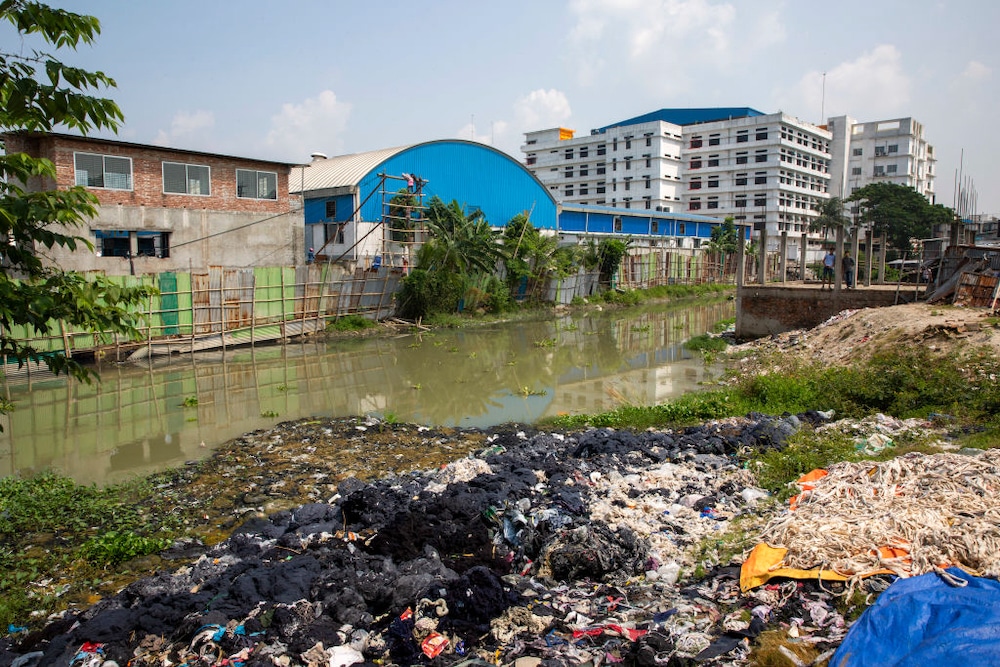
The industry is also responsible for polluted waterways from the use of fertilizers in cotton production, and usage of the chemicals in textiles factories, including lead, mercury and arsenic that end up in the factory’s wastewater, and enters local waterways surrounding the factories.
This harms both aquatic life and the health of the people living in close proximity to the water.
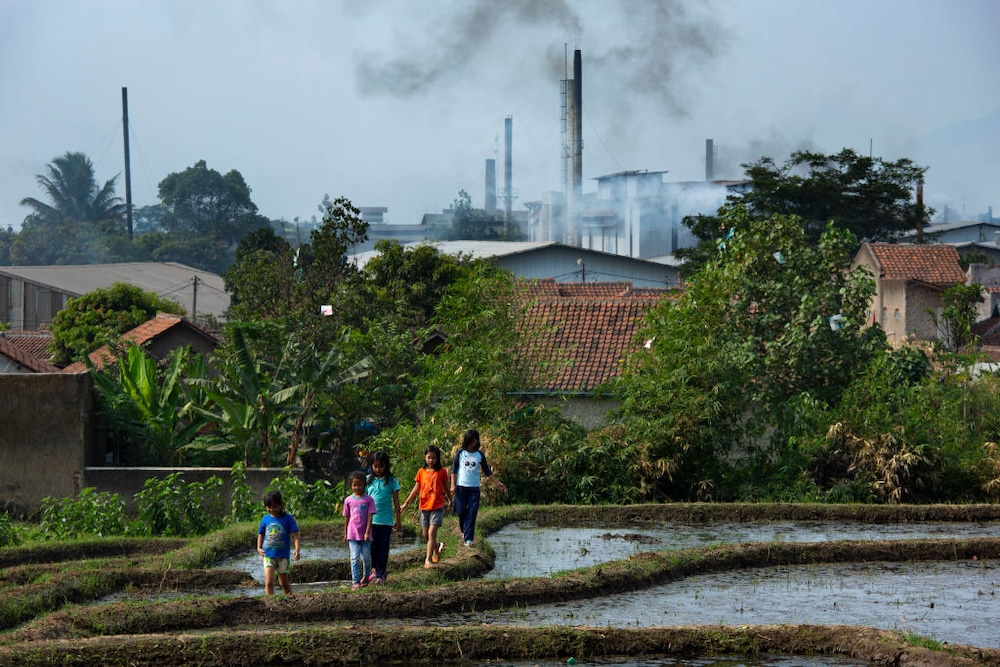
Concerning waste at landfills, currently 60,000 tons of clothes dumped in the Atacama Desert in Chile is detectable by satellite in space.
An estimate 92 million tons of textile waste ends up in landfills with synthetic fabrics like polyester, spandex and nylon taking anywhere from 20 to 200 years to decompose if they’re not incinerated.
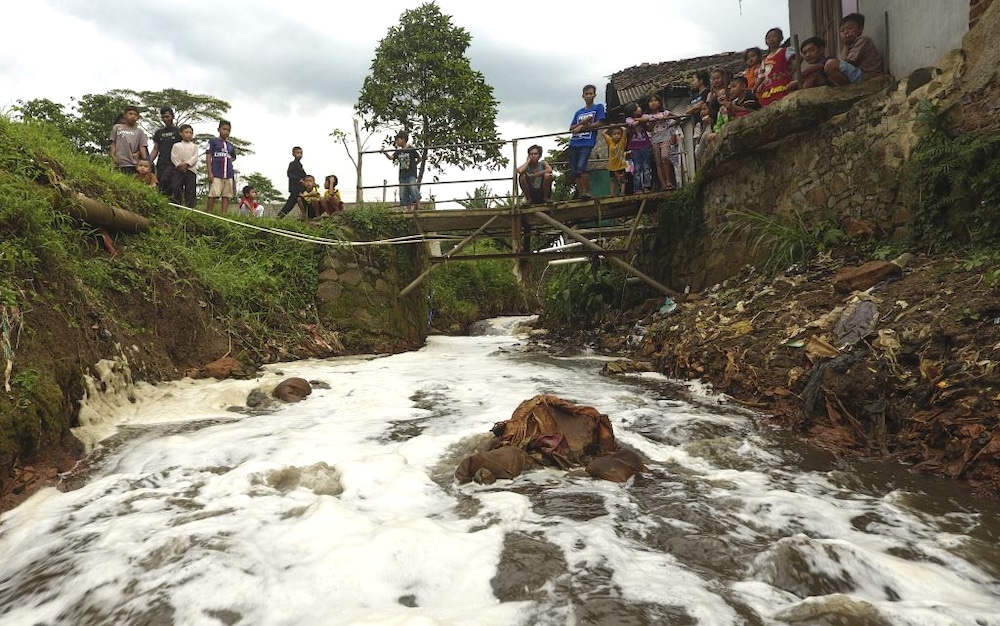
Water Consumption
Making clothes is a water-intensive process, with the fashion industry being the second-biggest polluter of freshwater resources. Every stage of the process involves vast quantities of water, from production to dyeing fabrics.
According to the UN, it takes 10,000 liters of water to produce just one pair of jeans. As of 2020, the fashion industry uses over 79 trillion liters of water a year.
Human Rights Violations
In the fast fashion industry, employees are often overworked, underpaid and subject to horrible working conditions.
Companies typically outsource production to low- to middle income countries as local labor laws, free trade agreements and safety standards are often not reinforced. Factory workers earn only a little over $2 a day, with some not receiving any wages, and over 85% of these workers are primarily women of color who have no health benefits or any form of financial security.
Additionally, Unicef reports that 170 million children are engaged in child labor, and many of them are in textile production.
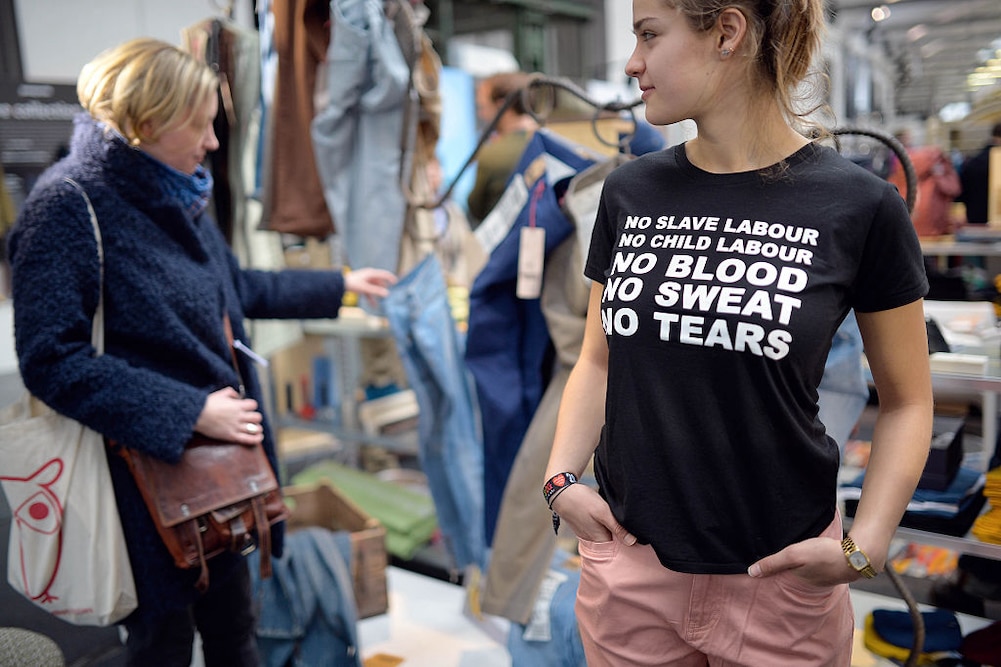
Fashion Activism
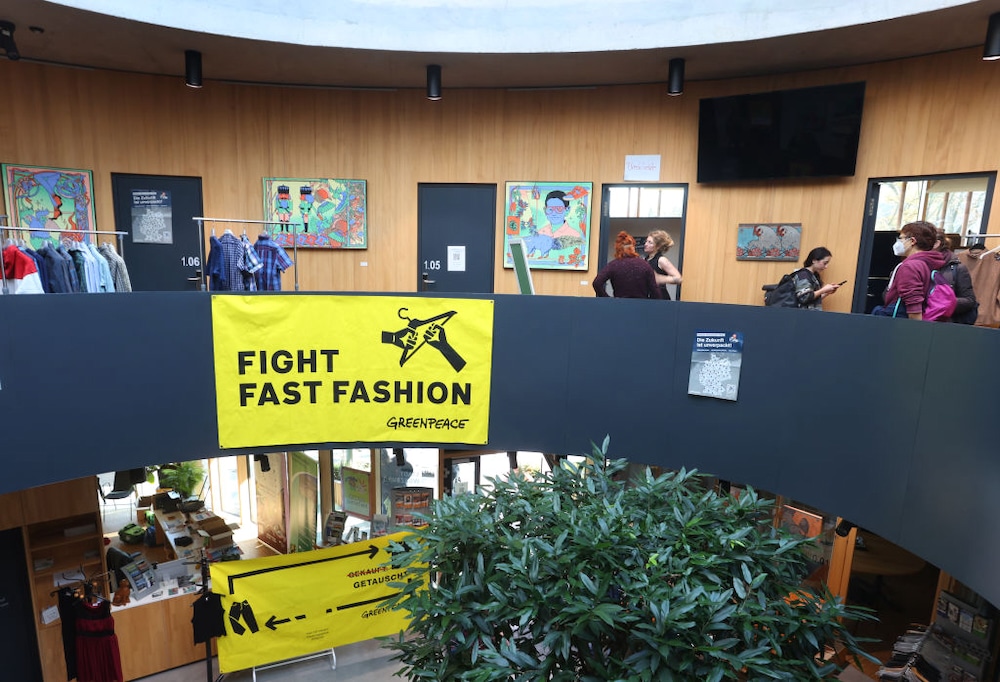
Over the last several years, movements and social media influencers have emerged to join the slow fashion movement as well as fight for workers’ rights and the environment.
The Slow Fashion Movement is an NGO that educates and empowers consumers to slow down and choose consciously.
They have thrown multiple campaigns, like Circular Fashion, You Are What You Wear (but do you know what you wear?), Know Your Leather, and Women’s Traditional Fashion that talks about clothing being a signifier of identity and culture.
The several organizations that are fighting for workers rights and fair labor conditions include the Clean Clothes Campaign, Fair Wear Foundation (which conducts independent inspections) and Fashion Revolution.
Fashion Revolution formed in the wake of the collapse of a garment factory building in Bangladesh that killed over 1000 people, and injured another 2500, after supervisors ignored a large structural crack in the building.
There is also a growing number of dynamic young influencers who are using social media platforms to spread awareness and education about fast fashion’s impacts, and help decide what to do to create a better planet.
While many are averse to paying higher prices for eco-friendly fashion, according to reports 60% of millennials prefer to shop for sustainable products, conveying that there is demand for better practices.
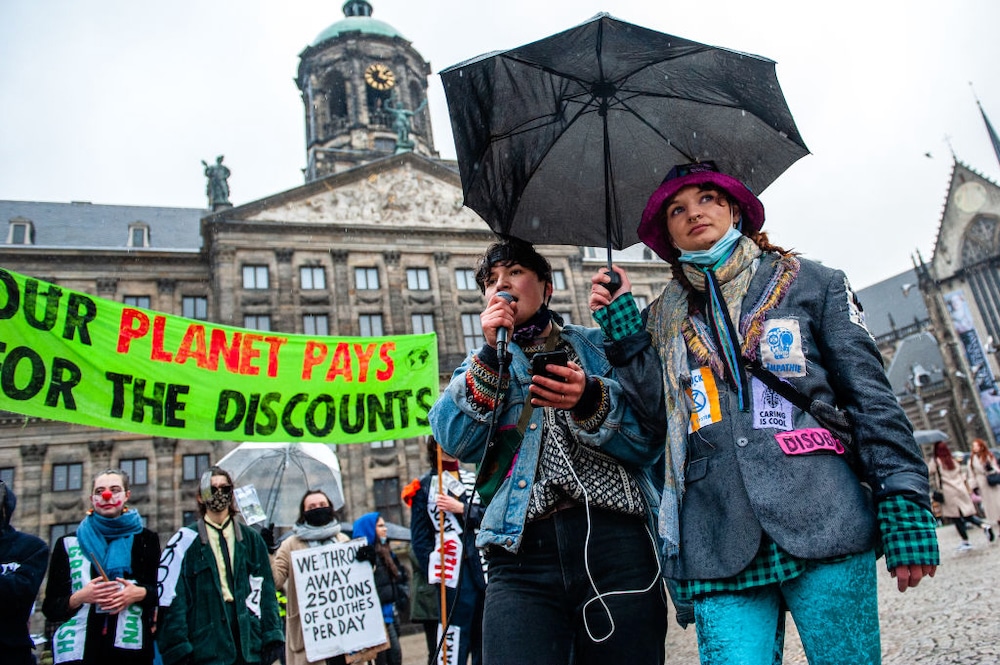
Building Slow Fashion Habits
While adopting slow fashion habits can seem like a political act, given the state of the fashion industry, slow fashion habits aren’t new and have been practiced by low-income working class folks for centuries, and often out of necessity.
For those who are just starting to adopt the practice, building better habits when coming from a rushed culture of disposability involves a level of slowing down to move with more conscious intention. Here are some actions to take to adopt more slow fashion habits.
Thrifting
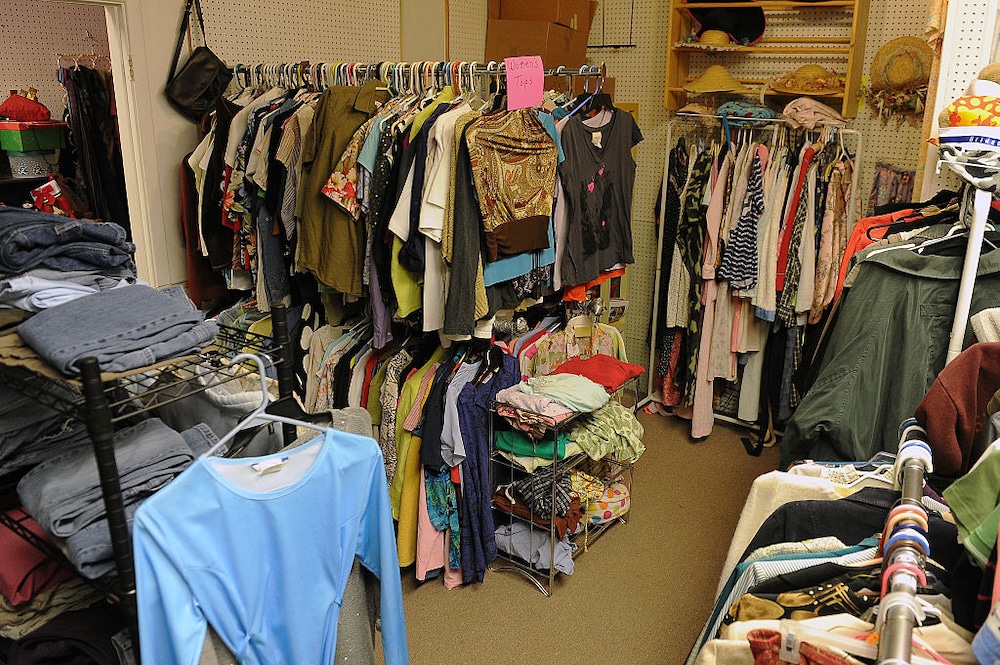
Thrifting is shopping for second-hand clothes enjoyed by a previous owner, which can be found at thrift stores, consignment shops, vintage clothing stores, as well as garage sales and flea markets. It’s a good way to contribute to a longer life for clothing items, which otherwise would go to a landfill.
Unfortunately, sometimes overwhelmed thrift stores who can’t get rid of their inventory also direct some of their clothing to the landfill. According to the EPA, 84% of that clothing ends up in landfills or is incinerated.
Prior to donating, hosting clothing swaps with friends or seeing who you might gift clothing to is another option to extend its wear.
Freecycling groups online are also good places to find or give away second-hand items. Search for your local Buy Nothing or Free Stuff groups on Facebook, or go to Freecycle.org to post or find items. Craigslist is another outlet for posting or finding free items.
Mending
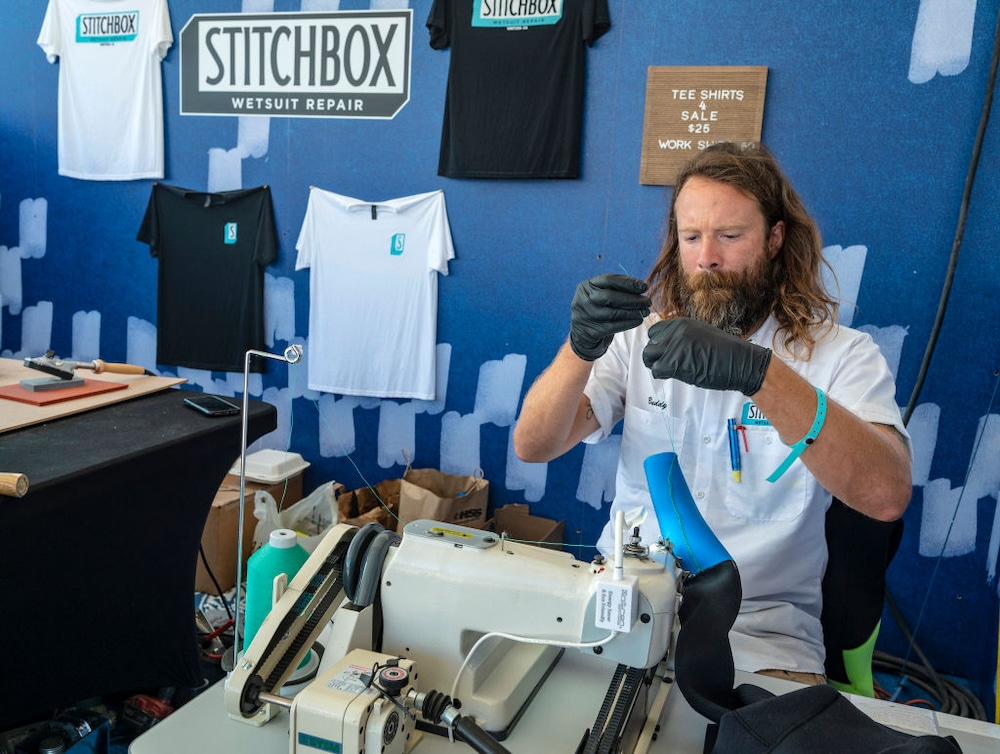
Orsola de Castro, author of the book Loved Clothes Last: How the Joy of Rewearing and Repairing Your Clothes Can Be a Revolutionary Act, writes, “We aren’t repurposing and mending clothes because we can’t afford to buy something new – we are doing it because we can’t afford to throw something away.”
For the current generations, mending clothes that have holes, stains, tears and missing buttons is not first nature like it was in previous generations that had to extend the life of their clothes out of financial necessity. Now, the typical first impulse is to throw things out.
Mending not only extends and brings new life to some items, but allows you to slow down, be meditative and also creative. There are two types of mending: visible and invisible.
Invisible mending is when the repair technique used aims for the garment to look close to its original condition.
There are several online video tutorials on how to do invisible mending.
Visible mending takes an ornamental approach to mending clothes. This involves techniques like using patches, embroidery or darning (interweaving yarn).
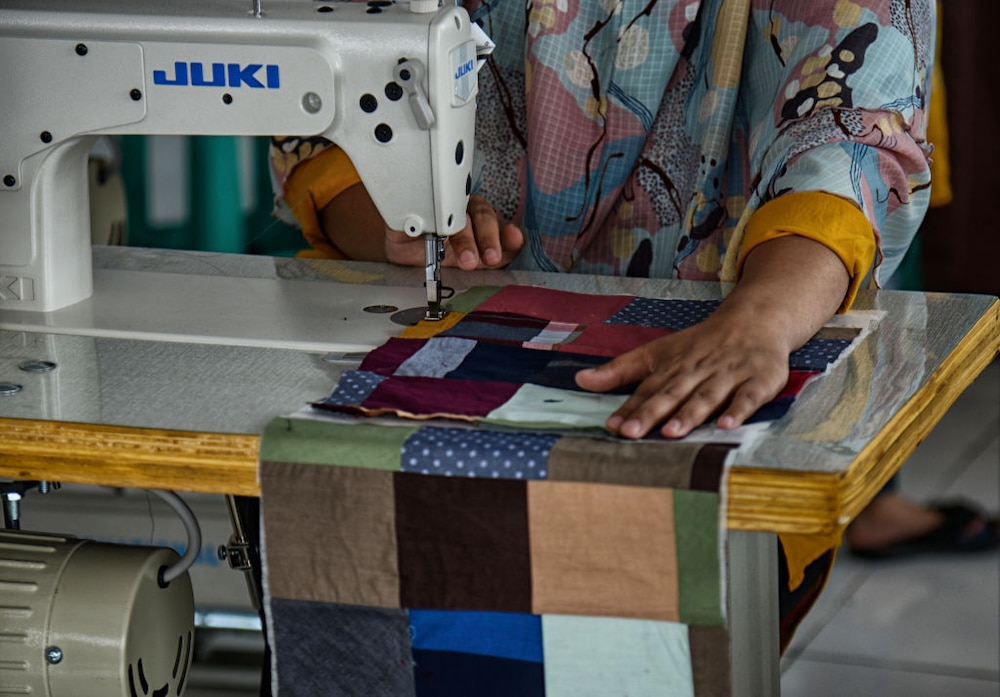
Visible mending can involve embroidering blocks, flowers, colorful patches, freestyle and satin stitching, turning clothing into wearable art.
Embroidering as mending dates back to the Edo period in Japan starting in the 1600s, and was created by the working class and fishing families to create more durable clothing.
Called sashiko, worn-out pieces would be stitched together with other pieces of fabric, to last for generations.
While there are businesses that offer tailoring, mending, repairing and altering, there are also YouTube channels to get started at home.
Some can be found here: Repair What You Wear, the Essentials Club, Blueprint DIY and Easy Sewing for Beginners.
Upcycling
During World War II, the British were told they would need to ration clothing, since available supplies were used to make war uniforms. This led to a large campaign to “make do and mend.”
Supplies became so scarce that women could not buy fabric and had to resort to using curtains and tablecloths to make clothes. Today, if clothes are too damaged to repair or if they have worn out their original use, another option to consider is upcycling them by repurposing them into something valuable again.
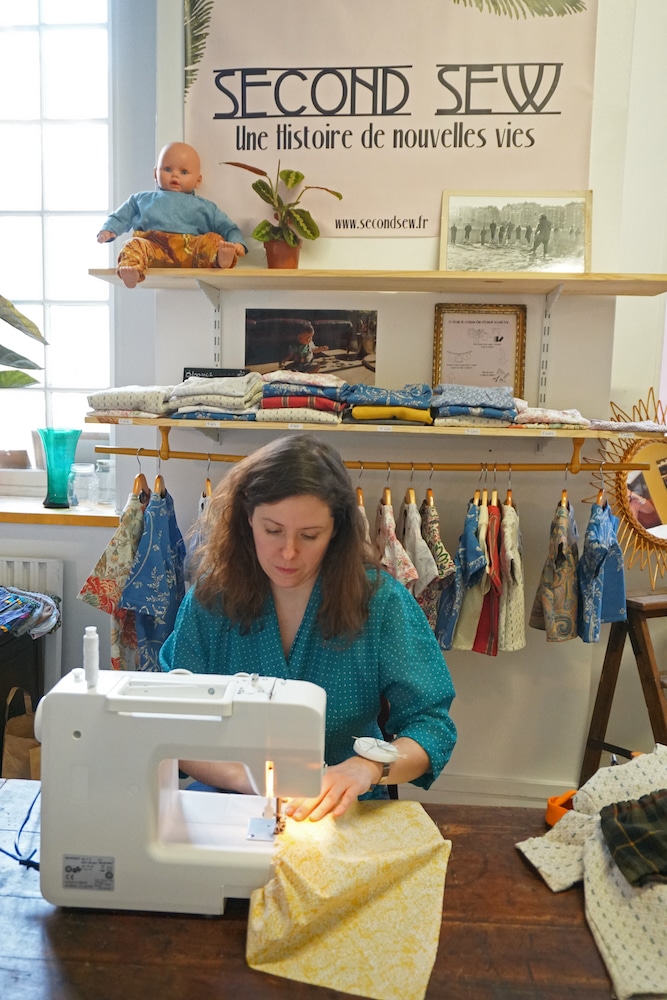
This can involve mending, but also changing the fit of clothes by cutting it down or adding more fabric. It could mean cutting up clothes and turning them into tote bags, or patches to put on other pieces of clothing. It could mean combining fabrics from two different garments to make something completely new.
It could also mean using it as fabric wrapping paper, or at the bare minimum for cleaning your house.
This also doesn’t have to stop at wearable garments, as clothing can be used to reupholster chairs, make pillow covers, tablecloths, rugs and more.
Here is a list from DIY Candy to get started.
Building a Minimalist Wardrobe
In the 1970s, boutique owner Susie Faux got tired of seeing people spend a lot of money on items that weren’t well made, didn’t fit right and were out of season the following year, so she created what is called the capsule wardrobe.
A capsule wardrobe consists of timeless well-made garments built to last a long time, and are versatile in ways they can be worn, dressed up or down.
Over the next several decades, several designers created capsule wardrobe pieces to guide people into emphasizing quality over quantity.
Policy
Over the last few years, several campaigns and policymakers have tried to regulate the fashion industry’s impact on humans and the environment. Some have passed, others haven’t, but some are still being campaigned for.
In the EU, a grassroots campaign called Good Clothes, Fair Pay fought for living wage legislation, but legislation has yet to be passed.
In 2020, France did pass a first-of-its-kind anti-waste law to protect the environment from the amount of waste people create. The law bans stores from disposing unsold goods. Instead of being burned or scrapped, they must be recycled, redistributed or reused.
The Fashion Sustainability and Accountability Act in New York, which stalled in the House in 2022, has been reintroduced for 2023.
The key elements of the Act would involve supply chain mapping for apparel and footwear retailers that operate in New York with a global revenue of at least $100 million. They would be required to map their supply chains and subsequently address and remediate supply chain issues.
It would also require due diligence in requiring brands to identify, cease, prevent, mitigate, account for and remediate adverse impacts to human rights and the environment in their own operations. If passed, it will require brands to assess potential adverse impacts from their supply chain relationships.
It would also involve a fashion remediation fund that will consist of money by fashion sellers who have been fined.
Several states in the U.S., as well as other countries in the EU, have Extended Producer Responsibility laws, which involve producers’ responsibilities for the end lives of their products. These include take back and recycling programs as well as designing new products that are easier to reuse, repair and recycle.
Choosing Sustainable Fashion Brands
Sustainable fashion can often be more expensive than other fashion due not only to higher quality materials, but also because ethical brands pay their employees living wages. Their sourcing of materials (cotton grown without pesticides, for example) often involves paying higher prices to farmers.
Looking for more affordable brands can also leave people vulnerable to greenwashing, which is when companies claim they are eco-friendly but still continue to pollute the environment.
Big brands like H&M and Decathlon have been found by regulators to have made false claims, and according to a screening of sustainability claims in the textile, garment and shoe sector, 39% could be false or deceptive.
GOTS (Global Organic Textile Standards) is one of the newer verification systems that shows that brands are using sustainably processed fabrics and organic materials. Some of those clothes carry that labeling.
In order to get GOTS approval, clothing must be made from 70% or more organically farmed fibers. Only low-impact chemicals are permitted to protect consumer health as well as the environment. Manufacturers must meet water and energy consumption targets and procedures, and garment factory workers rights are upheld by the key safety norms and values of the International Labour Organisation.
When looking for items that are GOTS certified, when typing in items you are looking for into a search engine with GOTS (for example “GOTS white t-shirt), a number of items will pop up.
However, here is a list of some companies that not only provide sustainable clothing, but have ethical supply chains:
A nonprofit social enterprise that addresses the exploitation of women, Anchal uses several sustainable fabrics and has a whole collection of GOTS Cotton with quilts, pillows, clothing and more.
An affordable sustainable fashion brand that utilizes GOTS-certified cotton, Pact offers a wide range of clothing.
Tentree offers apparel made ethically from eco-conscious fabrics like organic cotton, recycled polyester, TENCEL and hemp.
Beaumont Organic features a wide range of clothing using organic fabrics for their fair trade clothing ranges.
Seek Collective is a U.S. brand dedicated to transparency, authenticity, craft and sustainability.
Here is a more extensive list curated by Good on You.
The post Slow Fashion 101: Everything You Need to Know appeared first on EcoWatch.
